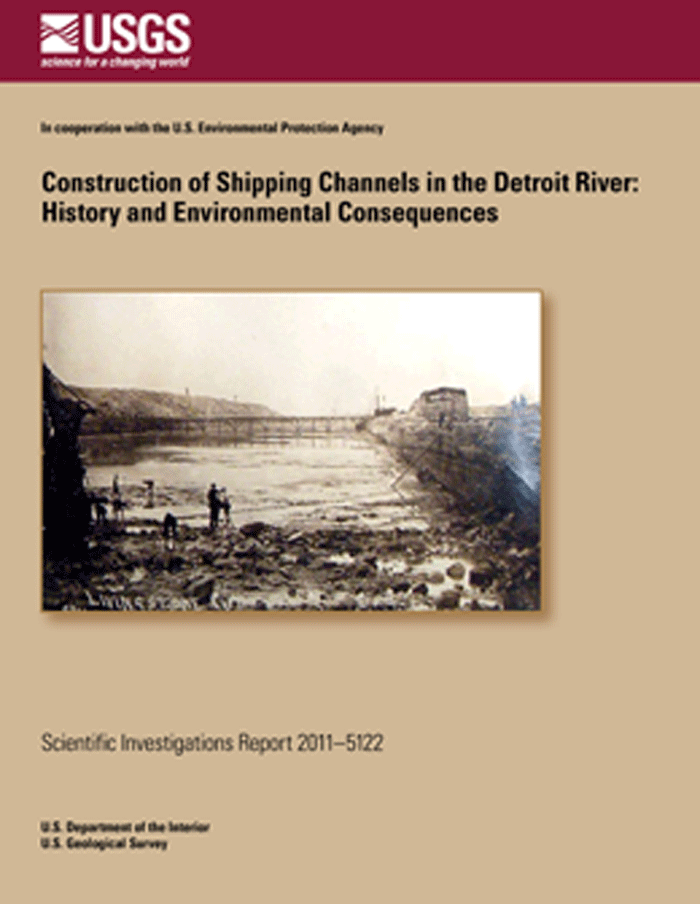Scientific Investigations Report 2011–5122

AbstractThe Detroit River is one of the most biologically diverse areas in the Great Lakes basin. It has been an important international shipping route since the 1820s and is one of the busiest navigation centers in the United States. Historically, it supported one of the most profitable Lake Whitefish (Coregonus clupeaformis) commercial fisheries in the Great Lakes. Since 1874, the lower Detroit River has been systematically and extensively modified, by construction of deepwater channels, to facilitate commercial shipping. Large-scale dredging, disposal of dredge spoils, and construction of water-level compensating works has greatly altered channel morphology and flow dynamics of the river, disrupting ecological function and fishery productivity of the river and influencing Great Lakes water levels. From 1874 to 1968, major construction projects created 96.5 kilometers (60 miles) of shipping channels, removed over 46,200,000 m3 of material, covered 4,050 hectares (40.5 square kilometers) of river bottom with dredge spoils, and built 85 hectares of above-waterline compensating works at a total cost of US$283 million. Interest by industries and government agencies to develop the river further for shipping is high and increasing. Historically, as environmental protection agencies were created, construction impacts on natural resources were increasingly addressed during the planning process and, in some cases, assessments of these impacts greatly altered or halted proposed construction projects. Careful planning of future shipping-channel construction and maintenance projects, including a thorough analysis of the expected environmental impacts, could greatly reduce financial costs and ecological damages as compared to past shipping-channel construction projects. |
First posted August 10, 2011 For additional information contact: Part or all of this report is presented in Portable Document Format (PDF); the latest version of Adobe Reader or similar software is required to view it. Download the latest version of Adobe Reader, free of charge. |
Bennion, D.H., and Manny, B.A., 2011, Construction of shipping channels in the Detroit River—History and environmental consequences: U.S. Geological Survey Scientific Investigations Report 2011–5122, 14 p., available at http://pubs.usgs.gov/sir/2011/5122/.
Abstract
Introduction
Study Area
History
Environmental Consequences
Acknowledgments
References